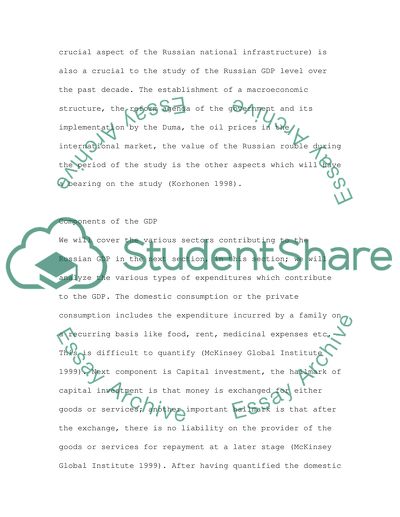Cite this document
(“GDP of Russia (full topic follows) Essay Example | Topics and Well Written Essays - 3250 words”, n.d.)
GDP of Russia (full topic follows) Essay Example | Topics and Well Written Essays - 3250 words. Retrieved from https://studentshare.org/miscellaneous/1524198-gdp-of-russia-full-topic-follows
GDP of Russia (full topic follows) Essay Example | Topics and Well Written Essays - 3250 words. Retrieved from https://studentshare.org/miscellaneous/1524198-gdp-of-russia-full-topic-follows
(GDP of Russia (full Topic Follows) Essay Example | Topics and Well Written Essays - 3250 Words)
GDP of Russia (full Topic Follows) Essay Example | Topics and Well Written Essays - 3250 Words. https://studentshare.org/miscellaneous/1524198-gdp-of-russia-full-topic-follows.
GDP of Russia (full Topic Follows) Essay Example | Topics and Well Written Essays - 3250 Words. https://studentshare.org/miscellaneous/1524198-gdp-of-russia-full-topic-follows.
“GDP of Russia (full Topic Follows) Essay Example | Topics and Well Written Essays - 3250 Words”, n.d. https://studentshare.org/miscellaneous/1524198-gdp-of-russia-full-topic-follows.


